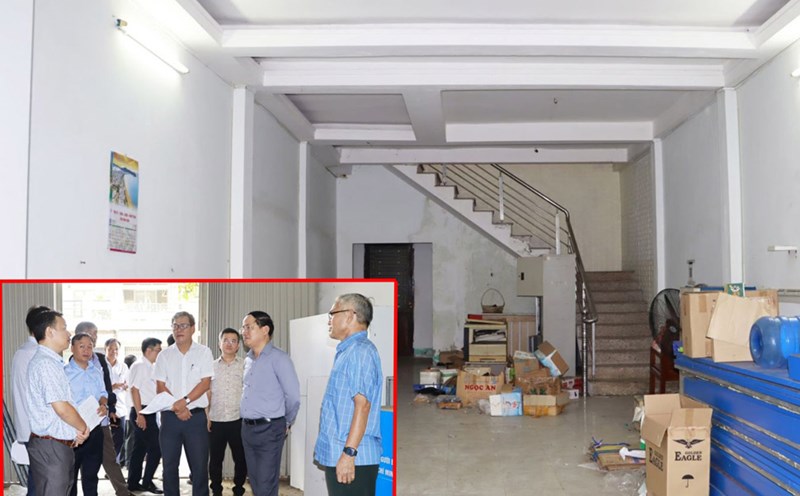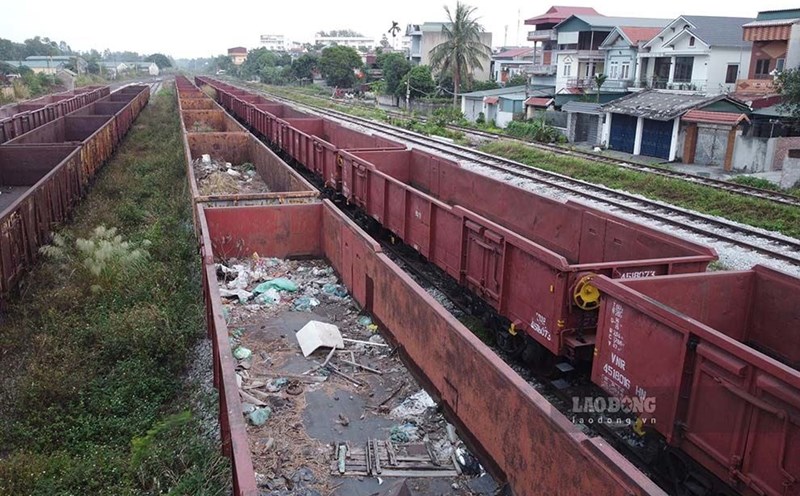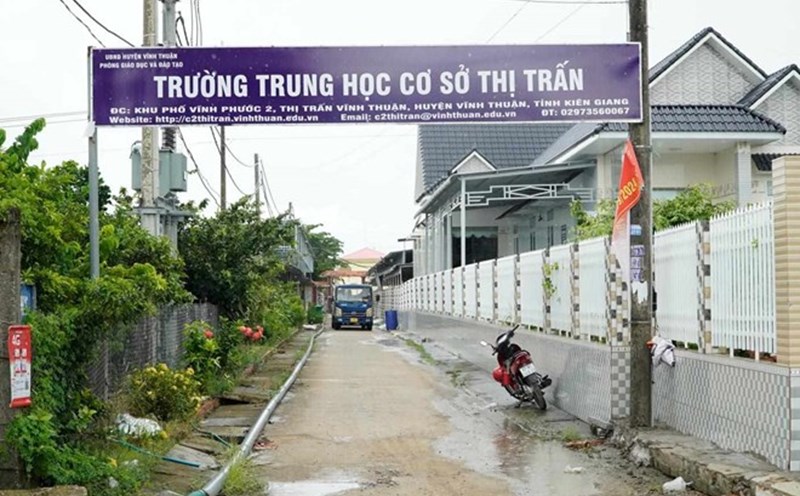2 reservoirs begin to release floodwaters
On November 24, the Department of Agriculture and Rural Development of Binh Dinh province said that it had sent a document to Binh Dinh Irrigation Works Exploitation Company Limited and the districts of Vinh Thanh, Tay Son, Tuy Phuoc, Phu Cat and An Nhon town regarding the operation and regulation of water at Dinh Binh reservoir (Vinh Thanh district).
Currently, the Northwest of the upper Kon River (bordering An Lao district) is experiencing heavy rain, with rainfall in the past 24 hours reaching 190mm, and water flow to Dinh Binh Lake at 600m3/s.
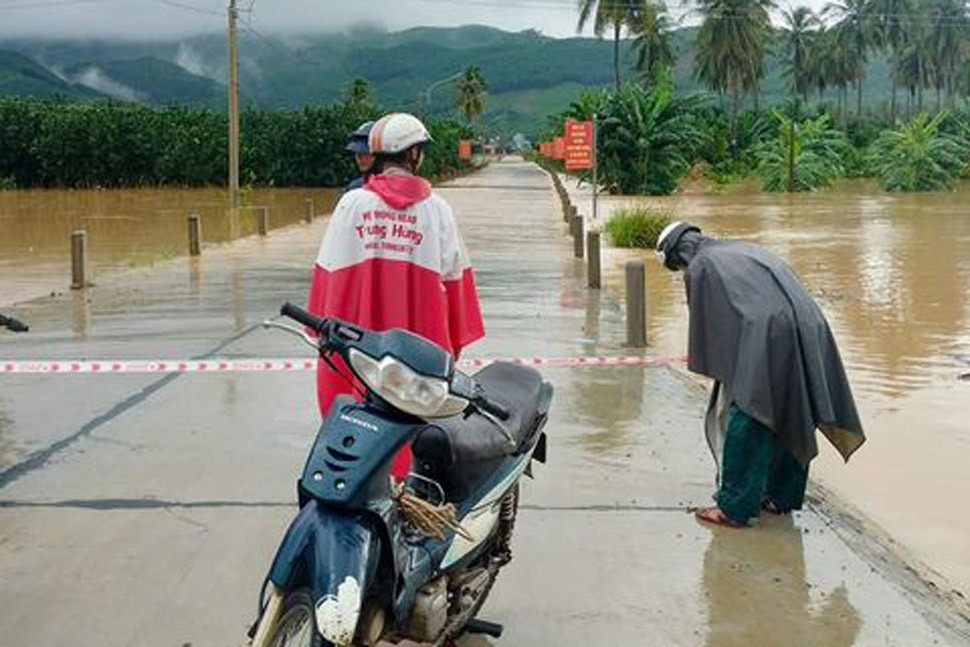
The Department of Agriculture and Rural Development of Binh Dinh province has requested Binh Dinh Irrigation Works Exploitation Company Limited to operate and regulate water through the spillway of Dinh Binh reservoir, with the flow rate gradually increasing, based on the situation of rain and incoming water, regulating not to exceed 600m3/s. The time starts from 10am on November 24.
Districts: Vinh Thanh, Tay Son, Tuy Phuoc, Phu Cat and An Nhon town notify relevant localities, agencies and units to promptly inform people.
According to Dinh Binh Irrigation Enterprise, at 10:00 a.m. on November 24, the water level of Dinh Binh Lake was 92m; capacity was over 227 million m3 (exceeding the design capacity); water flow to the lake was 1,252 m3/s; water flow through the lake was 59 m3/s. Currently, spillway No. 4 has been opened to operate and regulate water.
By 11:50 a.m. the same day, Dinh Binh Irrigation Enterprise had opened 6 spillways, with a total water flow of 360 m3/s. Currently, the water level of Dinh Binh Lake reached 92.21 m, with a capacity of 229.46 million m3 (101% of the design capacity).
At noon of the same day, water in the Kon River basin through Tuy Phuoc, Tay Son districts and An Nhon town also rose.
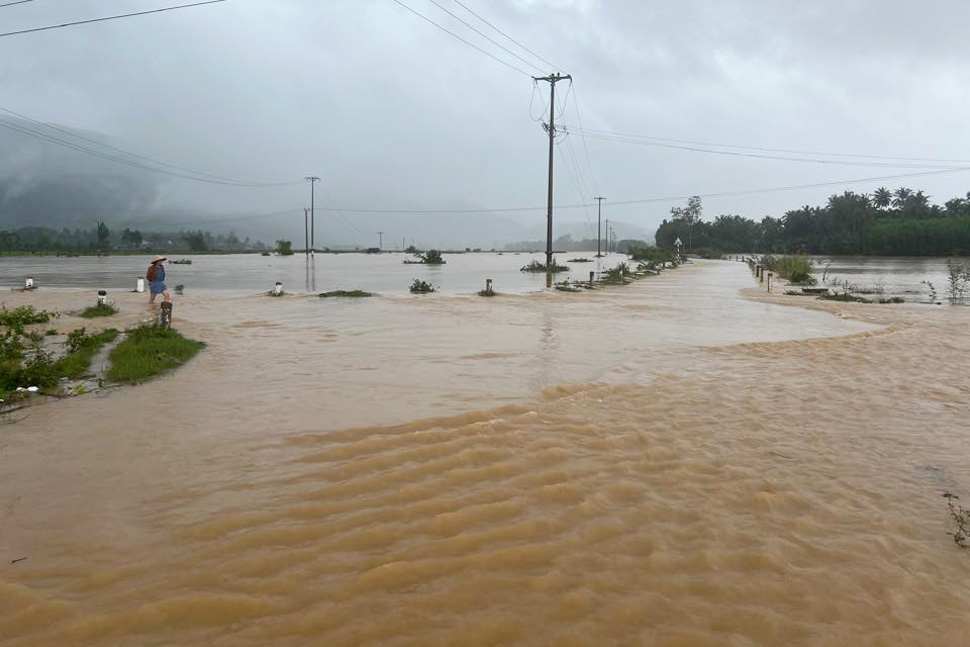
Implementing the direction of the Department of Agriculture and Rural Development of the province, Binh Dinh Irrigation Works Exploitation Company Limited has sent a document to the People's Committees of An Lao, Hoai An districts and Hoai Nhon town on the operation of opening the spillway to discharge flood water to maintain the water level of Dong Mit lake (An Lao district).
Binh Dinh Irrigation Works Exploitation Company Limited operates and regulates Dong Mit Lake, with the opening expected to increase by approximately 50m3/s each time, increasing once every hour to maintain the lake water level from exceeding the operating procedure.

At the same time, it is recommended that communes, wards and towns in the downstream area of the lake regularly update the situation and developments of flooding in the locality. Districts and towns notify communes, wards and towns to inform people in the downstream area to be proactive.
The "good" flood
On the same day, speaking with Lao Dong, Mr. Ho Dac Chuong - Deputy Director of the Department of Agriculture and Rural Development of Binh Dinh province said that the water level at Dinh Binh reservoir and Dong Mit reservoir reached its peak, so it was necessary to operate flood discharge downstream to ensure the safety of the reservoir, with a moderate discharge flow.
"With the current water discharge, it will only flood fields, ponds, lakes, rivers and streams, not cause flooding of houses or any damage. This is the first and possibly last flood of 2024. The flood discharge also helps bring water and alluvium to the fields to serve rice farmers for the next crop," said Mr. Chuong.
According to Mr. Chuong, the flood discharge operation of Dong Mit and Dinh Binh lakes will take place in the next 3-4 days and will be closely monitored by the Department of Agriculture and Rural Development. With a discharge flow of only 600m3/s, the amount of water flowing downstream is insignificant and still ensures safety.
"This flood discharge operation was proactive, so bringing water downstream was effective, ensuring the safety of the reservoir and providing water for people without causing any damage. Currently, people in the downstream area are very excited, because the water brings aquatic resources such as shrimp, fish, crabs... for people to catch," said Mr. Chuong.



